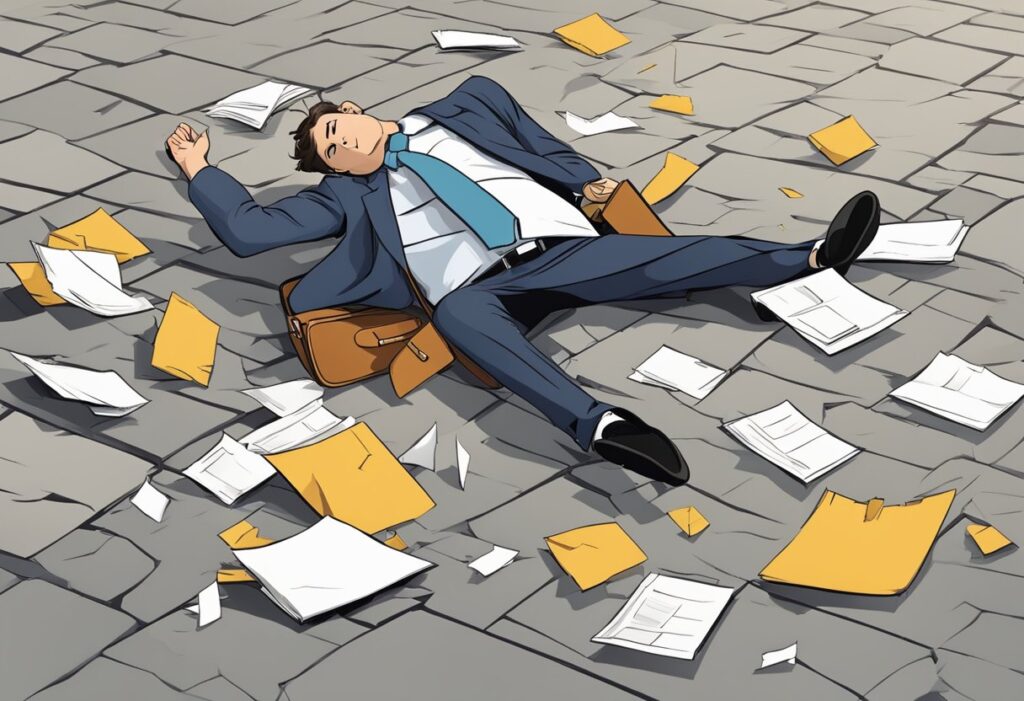Trip and fall accidents can happen anywhere—from sidewalks to grocery stores—and they often result from negligence. When someone is injured in a trip and fall incident, a trip and fall injury lawyer can provide vital assistance. These lawyers specialize in helping victims obtain compensation for their injuries through legal channels, ensuring they receive the support they need.

Finding the right attorney is crucial for anyone seeking justice after such an accident. They will guide clients through the complexities of the legal system, working tirelessly to build a strong case. With over 90% of personal injury cases settling outside of court, having a knowledgeable lawyer can make a significant difference in the outcome.
Understanding the responsibilities of property owners is important as well. When safety standards are not met, victims have the right to seek damages. A trip and fall injury lawyer focuses on holding responsible parties accountable and ensuring that victims’ rights are protected.
Understanding Trip and Fall Injuries
Trip and Fall Injury Lawyer
Trip and fall injuries can lead to serious consequences, including long-term medical issues. These accidents often result from negligence, and understanding the underlying causes and legal concepts is important for victims seeking compensation.
Common Causes and Injuries
Trip and fall accidents can occur due to various hazards. Some common causes include:
- Uneven surfaces: Raised sidewalks or holes can cause people to trip.
- Poor lighting: Dark areas make it hard to see obstacles.
- Cluttered walkways: Items left on paths can trip unsuspecting individuals.
- Icy areas: Slippery conditions during winter increase the risk.
- Faulty stairs: Broken steps or missing handrails are dangerous.
Injuries resulting from these accidents often include:
- Fractures: Broken bones, particularly in the wrists or legs, are common.
- Concussions: Head injuries can occur from falling.
- Traumatic brain injuries: More severe brain injuries can happen from hard impacts.
The Legal Concept of Premises Liability
Premises liability is a critical concept in trip and fall cases. It holds property owners responsible for keeping their premises safe. When someone is injured due to unsafe conditions, the owner may be found negligent if they:
- Failed to fix a known hazard.
- Did not reasonably inspect their property.
- Did not provide adequate warnings about dangers.
To prove a premises liability case, the injured party must show that the property owner had a duty to ensure safety, breached that duty, and caused the injury. Successful claims can lead to compensation for medical bills, lost wages, and pain and suffering.
Distinguishing Trip and Fall from Slip and Fall Accidents
It is essential to distinguish between trip and fall and slip and fall accidents.
- Trip and fall injuries happen when someone trips over an object or uneven surface.
- Slip and fall incidents occur when a person loses their footing on wet or icy surfaces.
While both cases involve premises liability and can result in serious injuries, the causes and legal strategies may differ. For example, slip and fall cases often hinge on proving the property owner knew about the slippery condition. In contrast, trip and fall cases focus on identifying hazards that led to the fall, such as potholes or cracked sidewalks. Understanding these distinctions can help injured parties navigate their claims effectively.
Legal Aspects of Trip and Fall Cases
Trip and Fall Injury Lawyer
Trip and fall cases involve complex legal principles. Understanding liability, proving negligence, and evaluating compensation are essential for those involved. Legal representation plays a crucial role in navigating these cases and ensuring fair outcomes.
Proving Negligence and Liability
To win a trip and fall case, the injured party must show that the property owner was negligent. This involves establishing a duty of care, meaning the owner had a responsibility to maintain safe conditions.
The plaintiff must file evidence demonstrating how hazardous conditions, like wet floors or uneven flooring, contributed to the accident. Gathering evidence such as medical records, accident reports, and witness statements can support the claim.
Negligence can also involve comparative negligence, where the injured person’s actions might have contributed to the accident. This could affect the compensation amount. Each case will depend on the specific circumstances surrounding the incident.
Financial Compensation and Damages
Victims in trip and fall cases can seek several types of compensation. Economic damages include medical expenses and lost wages due to the injury. For instance, if someone experienced a spinal cord injury, the costs could be significant.
Non-economic damages cover pain and suffering, emotional distress, and loss of enjoyment of life. These are harder to quantify but are vital for a complete recovery. In many instances, settlements average around $125,000, but this can vary widely based on individual case details.
Attorneys work to maximize compensation by negotiating settlements and possibly preparing for trial if a fair agreement isn’t reached.
The Statute of Limitations and Filing Deadlines
Each state has a statute of limitations that defines how long a person has to file a lawsuit after an accident. Generally, this time frame ranges from one to three years, but it varies across jurisdictions.
Missing this deadline can lead to the loss of the legal right to pursue damages. Therefore, understanding local laws and acting promptly is critical.
Consulting with a trip and fall lawyer as soon as possible can help ensure compliance with filing deadlines.
The Importance of Legal Representation
Having a skilled trip and fall attorney is crucial for navigating the complexities of personal injury claims. Lawyers understand how to prove negligence, gather evidence, and build strong cases that can lead to better compensation outcomes.
Expert legal representation can also aid in negotiating settlements with insurance companies, which can be challenging without experience. A qualified attorney assesses the case and advises clients on the best course of action.
Understanding the legal landscape helps clients make informed decisions and strengthens their chances of a favorable resolution.
Frequently Asked Questions
This section addresses common concerns related to trip and fall accidents. Understanding the necessary steps, liability, compensation factors, and other details can help individuals navigate the legal landscape effectively.
What are the steps to take after a trip and fall accident?
After a trip and fall, it is crucial to document the scene. This includes taking photos and noting any hazardous conditions. Injured individuals should seek medical attention right away. Notifying the property owner of the incident is also important.
How can one determine liability in a slip and fall case?
Liability often involves establishing whether the property owner was negligent. This means showing that they failed to maintain a safe environment or did not address known hazards. Eyewitness accounts and video evidence can also help clarify who is liable.
What factors influence the compensation amount for a slip and fall injury?
Compensation can depend on various factors. These may include the severity of the injury, medical expenses, lost wages, and pain and suffering. The degree of negligence by the property owner can also significantly impact the compensation awarded.
What is the typical timeframe for settling a trip and fall lawsuit?
The timeline for settling a trip and fall case can vary. Some cases may settle in a few months, while others could take several years. Factors like the complexity of the case and willingness of both parties to negotiate play a role in how long it takes.
How does one choose the best lawyer for a trip and fall case?
Selecting the right lawyer involves considering their experience and specialization in personal injury law. It is also beneficial to look at client reviews and case outcomes. Consulting with potential attorneys to discuss the specifics of the case is a crucial step.
What evidence is crucial for strengthening a trip and fall claim?
Key evidence includes photographs of the accident scene and medical records documenting injuries. Witness statements can also be valuable, along with incident reports filed at the property. Collecting all relevant documentation strengthens the claim and supports the case.
